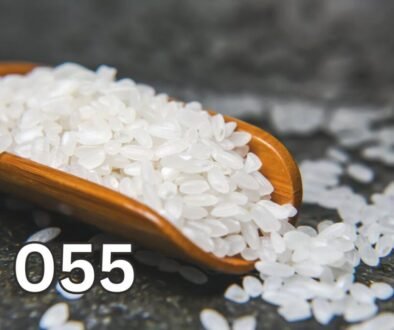The Lobster Story: What? Lobsters Are Immortal!?
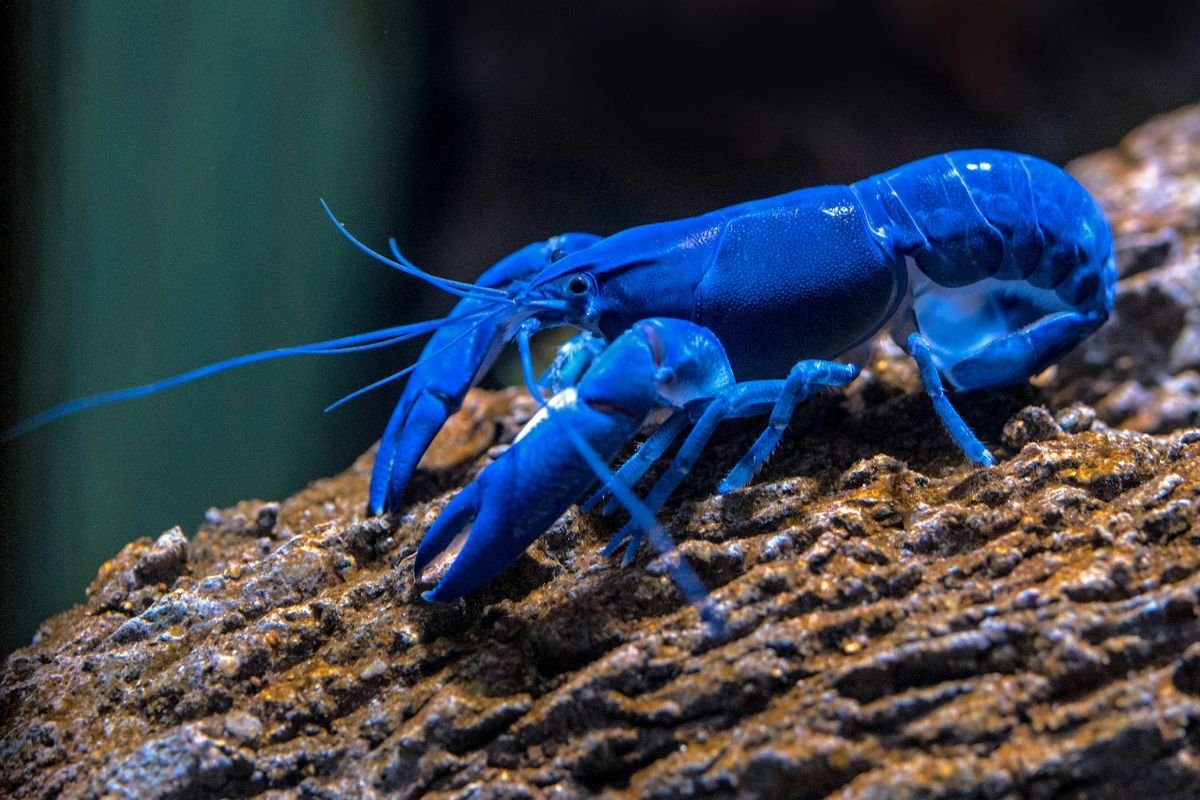
14 JANUARY 2025
The Fascinating World of Lobsters: Beyond the Dinner Plate
Lobsters are a favourite among seafood lovers. Despite their fierce appearance, they are delicious, nutritious, and undeniably one of the top choices for seafood lovers. But how much do we really know about these curious creatures?
Here’s a fun fact: lobsters march together in a single-file line. Picture that for a moment, a parade of lobsters! But that’s not all. They never truly age, which might make them the envy of the animal kingdom, at least until you find out they also urinate on each other’s faces as part of their mating ritual. Envy fading yet?
And here’s a twist in their history: lobsters were once considered cheap, low-quality food, often fed to the poorest people. Times have certainly changed. In today’s article, we’re diving into the fascinating lives of lobsters before they find their way to our plates.
A World of Lobsters: Meet the Many Species
The oceans are home to about 400 species that can broadly be classified as lobsters. Among them, roughly a dozen are commercially fished and served on dinner tables worldwide. Some popular varieties include the ornate spiny lobster, the painted spiny lobster, the striking black-and-white striped lobster, the vividly coloured European blue lobster, the prized Boston lobster, and the sturdy Australian rock lobster.
These species vary in size, colour, and habitat, but all share the unique traits that make lobsters such fascinating creatures to study, and savour.
Clawed vs. Spiny: Understanding Lobster Types
When you picture a lobster, is it the classic one with big, meaty claws served alongside melted butter? That’s a clawed lobster! But did you know there’s another type of lobster without those iconic pincers? Meet the spiny lobster, famous for its spiky shell and impressively long antennae. These two groups couldn’t be more different, yet both are equally fascinating.
The Spiny Lobster: A Closer Look at the Rock Lobster
A standout among the spiny lobsters is the Australian rock lobster, often affectionately called “rock lobsters.” Unlike their clawed cousins, these lobsters sport a rugged body covered in tiny spines. Instead of claws, they use their two long antennae to navigate their underwater world.
Rock lobsters belong to a broader family of creatures called Arthropods, a diverse group that also includes insects and other crustaceans. Digging deeper into their family tree, rock lobsters fall under the Malacostraca class, a group characterised by their segmented bodies. They are part of the Decapoda order (meaning “ten legs”) and the Pleocyemata suborder, which refers to species that carry their eggs on their bodies. Within this suborder, rock lobsters are part of the Achelata group under the Palinuridae family, commonly known as spiny lobsters.
With their unique adaptations and striking appearance, spiny lobsters are as fascinating to learn about as they are to admire.
Boston Lobsters: Clawed Marvels of the Sea
When it comes to clawed lobsters, the Boston lobster, also known as the American lobster, is the star of the show. Unlike their spiny cousins, Boston lobsters have smooth bodies and a pair of iconic, powerful claws. Their shorter antennae may not stand out like the long ones of spiny lobsters, but their pinchers more than make up for it.
Boston lobsters belong to the Arthropods group, an animal family that includes creatures with exoskeletons and jointed legs. Digging deeper, they are part of the Malacostraca class and the Decapoda order, meaning they sport ten legs. They also belong to the Pleocyemata suborder, a group known for carrying eggs on their bodies. Within this suborder, Boston lobsters fall under the Astacidea group, specifically the Nephropidae family, often referred to as “true lobsters” or “Clawed Lobsters” because of their large, distinctive claws.
Spiny or Clawed? Breaking Down Lobster Types
So, what’s the big difference? In a nutshell, the spiny lobster, like the Australian rock lobster, has no large claws but boasts spiky armour and long antennae. The Boston lobster, on the other hand, is instantly recognisable by its large, robust claws.
Despite these differences, both types share many biological traits, including their classification as crustaceans and their exoskeletons. For simplicity, let’s continue referring to both as lobsters as we dive deeper into their incredible world.
Lobsters’ Unsophisticated Way of Greeting
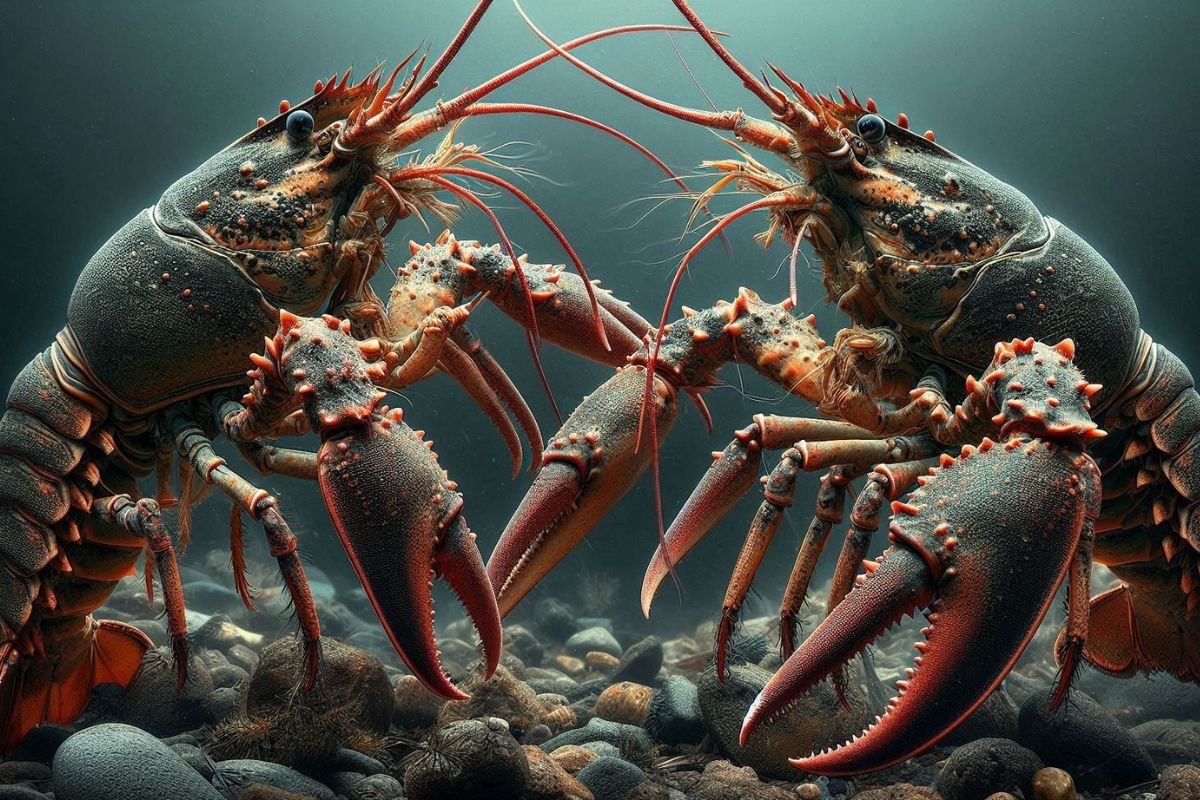
Lobsters are nocturnal creatures, preferring to hide in rock crevices during the day and explore the ocean floor at night. For these ocean dwellers, poor eyesight isn’t much of a disadvantage. Instead of relying on vision, lobsters depend heavily on their sense of smell and taste for survival. In fact, when it comes to detecting scents, lobsters are among the most sensitive animals in the world, surpassing even sharks.
Lobsters: The “Walking Noses” of the Ocean
Biologists often describe lobsters as “walking noses.” What does this mean exactly? Lobsters have chemical receptors scattered all over their bodies, on their heads, antennae, claws, and even their legs. These receptors enable them to detect smells from their surroundings, like locating food or detecting predators. With their entire body acting as a nose, it’s no wonder lobsters are incredibly sensitive to chemical signals. This heightened sense of smell allows them to pick up on cues even from great distances, which plays a vital role in their survival and interactions with the environment.
Lobsters’ Built-In “Taste Testers”
Lobsters enjoy a unique advantage, before they even consume their food, they’re already “tasting” it. Thanks to the chemical receptors covering their claws, lobsters can evaluate whether their catch is suitable to eat as soon as they grasp it. Imagine being able to tell how delicious your food is just by touching it with your fork or spoon, pretty handy, right?
With such a highly developed sense of smell, it’s no surprise that lobsters also use scent as a means of communication. In the animal kingdom, using scent to relay messages is common. For instance, ants leave a chemical trail to guide others to food, and if one is killed, it releases a scent to warn others of danger. Lobsters use similar scent-based signalling in their interactions.
Lobsters’ Unique Communication: Scent and Urine
Lobsters face a challenge when it comes to using scent for communication. Living in water means that any scent they leave behind would quickly be carried away by the ocean current, making it difficult for others to detect. So, how do they overcome this? Lobsters have developed a solution that’s quite effective. Much like dogs marking their territory with urine, lobsters also rely on urine to communicate important information through the chemicals and pheromones it contains.
Lobsters’ Unusual Communication Method: Urinating from Their Faces
Lobsters have a surprising way of urinating, right from their faces! Just below their eyes, they have two nozzles, one on each side, which they use to release urine. Yes, you read that right, lobsters urinate from near their eyes. But what’s even more fascinating is how they use this ability for communication. To ensure their messages aren’t lost in the ocean currents, lobsters spray their urine directly onto another lobster’s face, ensuring the other lobster receives the message loud and clear. It’s a simple, efficient, and somewhat bizarre way to communicate.
What Messages Are Lobsters Sending?
Lobsters use their unique method of urine spraying for various types of communication, with one of the most basic being identity recognition. By smelling the urine, they can determine whether the other lobster is someone they’ve encountered before or a complete stranger. This technique plays a key role during male confrontations over a potential mate. When two male lobsters compete, they will spray urine on each other’s faces as a warning to back off. It’s a bit like our saying, “disagreements lead to fights,” but for lobsters, it’s more like “a difference in scent leads to a fight.”
Lobster Courtship: Victory, Pheromones, and Scented Signals
After a male lobster wins a fight, he releases a pheromone in his urine and sprays it on the female’s face as a way to flaunt his victory and display his strength. It’s like a lobster version of flexing muscles and blowing kisses, except with a lot more spraying!
In return, the female may respond with her own urine spray, which has a calming effect on the male, allowing the two to move forward with their interaction. For lobsters, scent is not just a form of communication; it’s central to their social and mating behaviours. The title “walking nose” is certainly fitting for these scent-sensitive creatures.
Lobsters: On My Command, Ready, March!
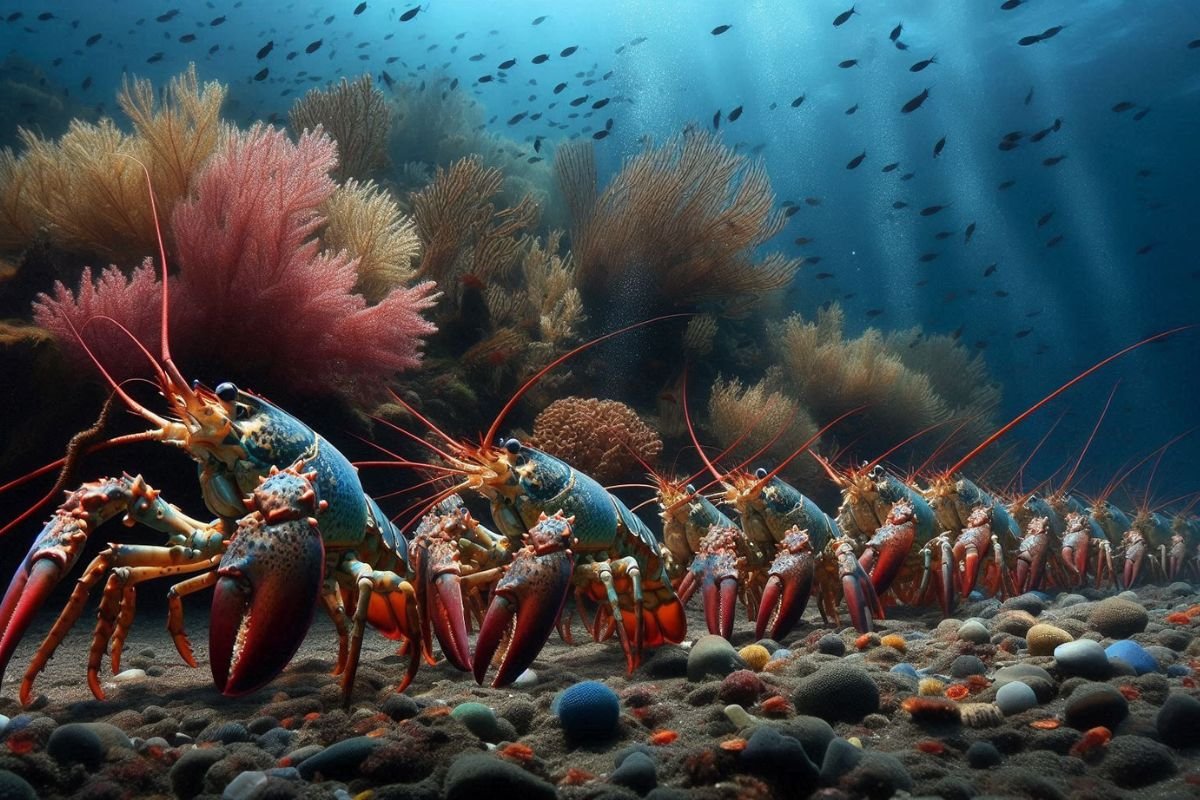
Like many creatures, lobsters undertake migrations for essential reasons such as food, breeding, or escaping unfavourable environmental conditions. These migrations, while not as vast as those of some marine giants, are remarkable in their own right. Lobsters often travel distances of 300 to 500 kilometres to reach their spawning grounds, a journey that is both strenuous and fascinating.
Crawling, Not Gliding
To appreciate the scale of lobster migration, let’s compare it to some of the ocean’s renowned travellers. Humpback whales journey an impressive 6,000 kilometres from Hawaii to Alaska, while great white sharks cover a staggering 20,000 kilometres on their round trips between South Africa and Australia. Even whale sharks swim similar distances between Panama and the Mariana Trench.
Now, while 300 to 500 kilometres might pale in comparison, there’s a crucial distinction: lobsters aren’t cruising through the water with the help of fins or flippers. Instead, they are crawling laboriously across the seafloor. This method of travel, coupled with their relatively small size, makes their journey significantly more challenging and awe-inspiring.
Lobsters on the Move: The Single File March
In 1984, scientists studying spiny lobsters in Papua Bay made a fascinating discovery. By tagging and tracking the lobsters, they observed that these creatures move in an orderly single-file formation, covering an average of 6.1 kilometers per day. At this pace, a 500-kilometer journey to their spawning grounds could take nearly three months of continuous movement.
The deliberate, army-like march of these lobsters is an impressive display of endurance and organisation. However, it also raises an intriguing question: why do lobsters stick to this single-file marching style?
The Secret Behind Their Single-File Formation
The most widely accepted explanation for this behaviour is energy conservation, similar to why geese fly in formation. By travelling in a line, lobsters reduce water resistance, particularly for those positioned toward the back of the group. This allows the trailing lobsters to conserve energy during their long migration.
Adding further credibility to this theory is an interesting phenomenon observed during lobster migrations. If two groups of lobsters encounter one another along their journey, they often merge into a single, larger group. This merger not only reduces the strain on the leading lobsters but also demonstrates the collective energy-saving strategy employed by these creatures.
Once Upon A Time: Only the Poor Ate Lobsters
The Misleading “Boston Lobster”
Let’s start with a clarification: the so-called “Boston lobster” doesn’t actually hail from Boston. Officially known as the American clawed lobster, this species thrives in the cold waters of the North Atlantic, from North Carolina to Newfoundland. Depending on its catch location, it may also be called the American lobster or Canadian lobster.
The term “Maine lobster” often comes up because the waters off Maine are particularly rich in lobsters. But where does “Boston lobster” come from? The answer lies in logistics. Boston’s airport is a major hub for exporting these crustaceans worldwide, inadvertently branding them with the city’s name.
Lobster: From Poverty Fare to Luxury Cuisine
Today, lobster is synonymous with indulgence, a luxurious centrepiece on fine dining menus. But rewind to the 19th century, and you’d find a very different story. Back then, lobster was the food of the poor. In fact, eating lobster daily was seen as a sign of poverty, not affluence. For many, it was a last-ditch option to stave off hunger.
This transformation, from a “poor man’s protein” to a symbol of wealth, offers a fascinating glimpse into how food culture evolves over time.
Colonial Abundance: Too Much of a Good Thing
When European settlers first arrived in North America, lobsters were everywhere. After storms, beaches would be littered with them, making them as easy to gather as driftwood or seaweed. This abundance, paired with Europeans’ preference for meat over seafood, led to lobsters being considered cheap and undesirable.
In their eyes, the American clawed lobster wasn’t a delicacy, it was a nuisance. This perception lingered for years, with lobsters frequently ending up as pig feed or, when spoiled, as fertiliser.
Lobsters: A Desperation Meal
For the poorest settlers, lobster was a food of last resort. If you had other options, you avoided it. Its association with hardship was so strong that workers and servants demanded protections against being served too much lobster.
Employment Contracts and the Lobster Clause
Believe it or not, employment contracts in the 17th and 18th centuries sometimes included specific clauses limiting the number of lobster meals served to labourers. It was considered cruel to force someone to eat lobster more than a few times a week. Even prisoners, often fed lobsters because they were cheap, protested the repetition of their diet.
Fast forward to today, and it’s ironic to see lobster celebrated on the world’s finest plates. What was once seen as unfit for pigs or prisoners is now a culinary treasure.
The Rise of the Lobster: From Poverty to Prestige
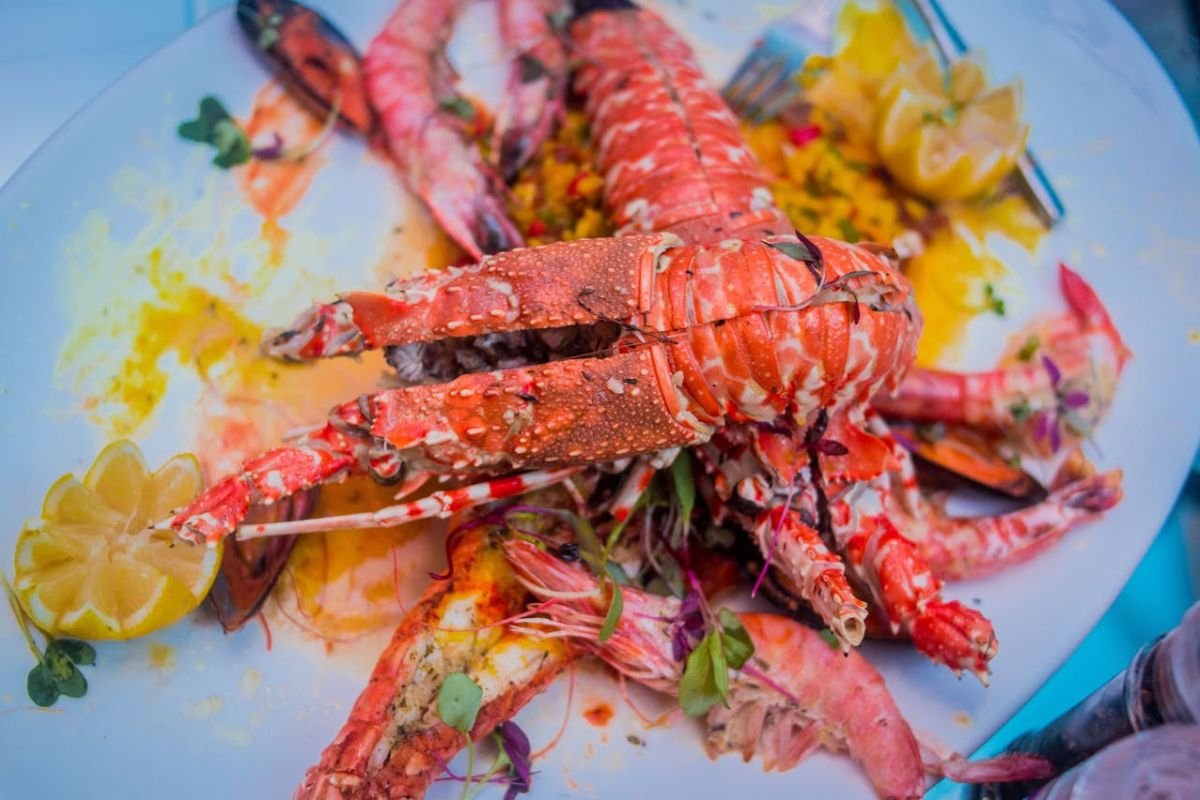
From Survival Food to Gourmet Delight
By the early 20th century, the Boston lobster underwent a dramatic transformation. Once a food of last resort, it had become a symbol of luxury, gracing the tables of fine dining establishments. The shift began as more people discovered its rich, buttery flavour, turning what was once scorned into a prized delicacy.
This newfound demand outpaced supply, driving up prices and further cementing lobster’s place in high-end cuisine. The days of scavenging lobsters off the beach for survival were gone. Today, lobster harvesting is strictly regulated to ensure sustainability, making this once-overlooked crustacean a treasure of the sea.
Sustainable Lobster Fishing Practices
Why Size Matters
The growing demand for lobster has highlighted the importance of sustainable fishing practices. In Maine, for instance, strict size regulations are in place to protect lobster populations.
- Too Small to Harvest: If the distance from the lobster’s eyes to the edge of its carapace is less than 83 mm (about 3.25 inches), it’s considered too young and must be released.
- Too Large to Harvest: Lobsters larger than 130 mm (5.1 inches) must also be released because they are typically the most prolific breeders, critical for population sustainability.
These measures ensure that both young and mature lobsters contribute to maintaining a healthy ecosystem.
Protecting Female Breeders: The Notching Practice
Another cornerstone of sustainable lobster fishing is the protection of female lobsters carrying eggs. If an egg-bearing female is caught, she is promptly released back into the ocean. To ensure her future protection, fishers make a small notch in the second left tail fin, a process known as “notching.”
The notch serves as a permanent reminder that this lobster is a valuable breeder. Even if caught later without eggs, her notched tail ensures she is returned to the sea. This practice not only preserves individual breeders but also plays a vital role in maintaining the lobster population.
The Role of Swimmerets: A Mother’s Care
When a female lobster lays her eggs, she uses her swimmerets, small, paddle-like appendages under her abdomen, to secure them. These swimmerets gently wave, providing oxygen and protecting the eggs from predators.
The lobster’s scientific classification, Pleocyemata, meaning “egg-bearing,” honours this maternal role. Depending on water temperature, a female lobster carries her eggs for up to a year, nurturing them until they hatch. Once hatched, these tiny lobsters embark on a journey that scientists call an “ageless life,” thanks to the lobster’s unique biological traits.
Lobsters Are Ageless! Then Why Do They Still Die?
The Ageless Mystique
Lobsters possess a remarkable trait that has fascinated scientists for decades: they don’t experience aging in the traditional sense. Unlike most animals, lobsters don’t show signs of deterioration as they grow older. Instead, they remain biologically youthful throughout their lives. But to understand this fascinating phenomenon, we must start at the beginning, when lobsters are tiny larvae drifting in the ocean.
The Harsh Odds of Lobster Larvae
A mother lobster can lay thousands, even tens of thousands, of eggs during a single reproductive cycle. However, the survival rate for lobster larvae is astonishingly low. Most become prey for ocean predators, leaving only about 1 in 1,000 to survive and reach adulthood. For these few survivors, their journey toward growth and survival hinges on a critical biological process: molting.
The Molting Process: How Lobsters Grow
Molting is the key to a lobster’s growth. This process involves shedding their old exoskeleton and forming a new, larger one. Without it, lobsters would be trapped in their rigid shells, unable to grow.
Young lobsters molt frequently, up to 10 times a year, as they rapidly increase in size. As they mature, the intervals between molts lengthen. Fully grown lobsters may molt once a year, or even less frequently, as the process becomes more strenuous with age.
The Never-Ending Growth of Lobsters
Unlike many animals, lobsters never stop growing. This phenomenon, known as indeterminate growth, allows them to continue increasing in size for as long as they live. Larger lobsters enjoy advantages in the wild, such as better protection from predators and greater ability to defend their territory. However, growth comes with challenges.
As lobsters age and grow larger, molting becomes increasingly difficult. For some, the physical strain of shedding their exoskeleton proves too much, and they die during the process. This natural limitation effectively determines the maximum size lobsters can achieve.
The Largest Lobster on Record
One extraordinary example of lobster growth was caught off Nova Scotia’s coast in 1977. This giant American lobster measured an astonishing 1.06 meters (3.5 feet) in length and weighed 20.14 kilograms (44.4 pounds), setting a world record.
By comparison, most American lobsters caught today weigh between 1 and 2 kilograms (2 to 4 pounds). This raises a fascinating question: How long does it take for a lobster to grow to such immense proportions?
The Challenge of Estimating Lobster Age
Why Determining a Lobster’s Age is So Difficult
Unlike mammals with bones or fish with scales that provide clear markers of age, lobsters present scientists with a unique challenge. Every time a lobster molts, it sheds its exoskeleton, discarding any physical evidence of its growth history. This means there are no direct clues, like growth rings in trees, to determine a lobster’s age. Scientists must instead rely on indirect methods such as monitoring growth rates, environmental factors, and molting patterns, an imperfect science that leaves many questions unanswered.
Estimating Lobster Age: A Puzzle Without Pieces
For instance, the record-breaking lobster caught in 1977, a colossal specimen over 1 meter in length and weighing more than 20 kilograms, was estimated to be at least 100 years old. This estimation was based solely on its size and the assumed frequency of molting over its lifetime. However, because of the variability in growth rates and molting intervals, determining its exact age remains an enigma wrapped in layers of discarded shells.
The Molting Process: A Key to Growth
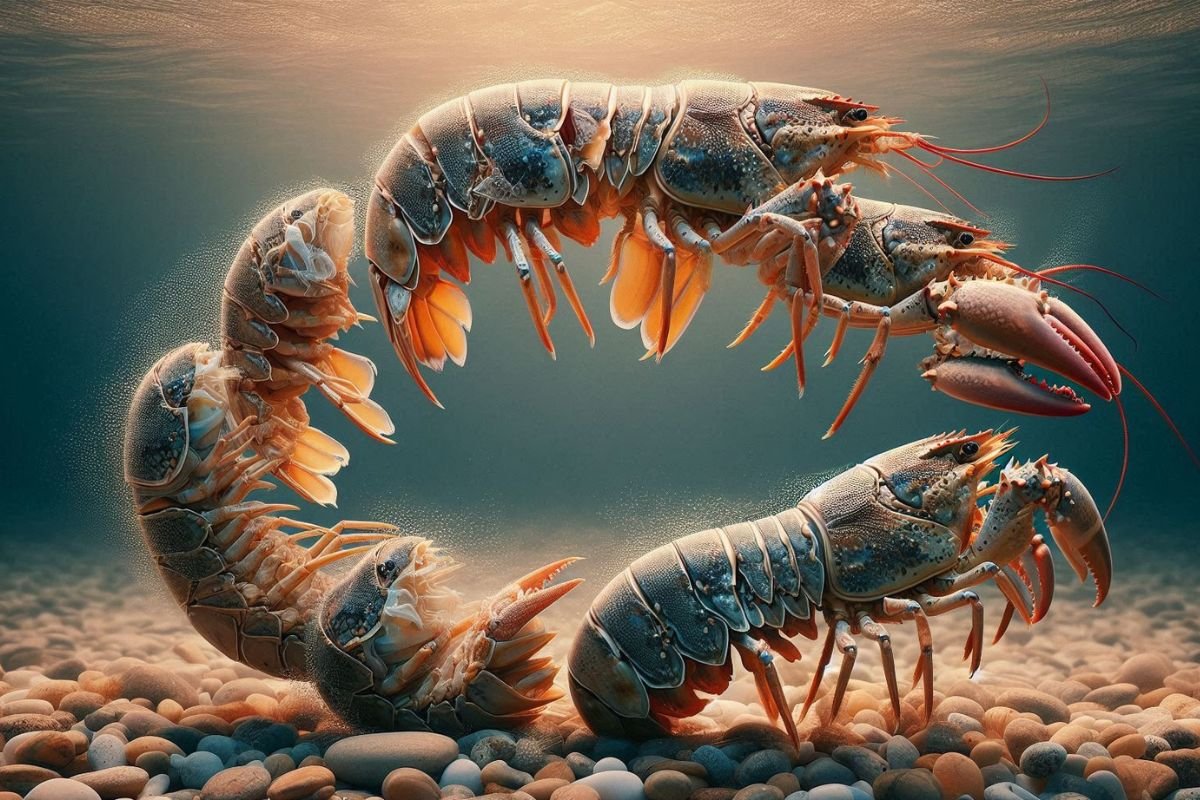
How Lobsters Grow Bigger
The molting process is central to a lobster’s growth. Since their rigid exoskeletons can’t expand, lobsters must shed their old shells and grow new ones as they increase in size. When the time comes, a lobster carefully breaks out of its old shell and begins forming a larger, stronger one underneath.
The “New Body” Effect
Once the old shell is shed, the lobster’s new exoskeleton is soft and pliable. During this brief window, the lobster absorbs water to stretch its body, effectively “inflating” itself. This expansion allows the new shell to harden at a larger size, giving the lobster room to grow. With each molt, it’s as though the lobster gains a fresh start, a stronger, more robust version of itself.
Regeneration: Starting Fresh
One of the most remarkable aspects of molting is the lobster’s ability to regenerate lost limbs. If a claw or leg has been damaged or lost, molting offers an opportunity for the lobster to regrow the missing appendage. This regenerative power, combined with their new exoskeleton, makes each molt a true renewal process.
The Ageless Wonders of Lobsters: A Life Without Aging
What sets lobsters apart in the animal kingdom is their resistance to aging. Whether they are 10 years old or 100, lobsters show no signs of the typical decline associated with aging. They maintain their strength, vitality, and reproductive capabilities throughout their lives. This defiance of aging has captivated researchers, offering insights into the mysteries of longevity.
For scientists, lobsters represent a biological marvel, living proof that aging is not an inevitable fate for all creatures. Their unique biology not only fuels scientific curiosity but also inspires deeper questions about what it truly means to grow old.
The Secret to Lobsters’ Agelessness: Telomerase Enzyme
The Role of Telomerase in Lobster Longevity
How do lobsters defy aging while other animals inevitably grow old? The secret lies in a remarkable enzyme called telomerase. Found in their chromosomes, telomerase acts like a molecular repair crew, keeping their DNA in pristine condition.
At the ends of each chromosome are protective caps called telomeres, which shield genetic material during cell division. Over time, in most animals, these telomeres gradually shorten with each division, leading to aging and cell death. But lobsters have an advantage. Thanks to telomerase, their telomeres are continuously repaired, allowing their cells to keep dividing without losing functionality.
How Telomerase Works
To understand telomerase, think of it as a fountain of youth at the cellular level. In most animals, repeated cell divisions erode telomeres, much like how the ends of shoelaces fray with use. Once the telomeres become too short, cells lose the ability to divide, hitting what scientists call the Hayflick limit. This phenomenon is a key driver of aging.
Lobsters, however, cheat this biological system. Telomerase not only prevents telomere shortening but actively repairs and lengthens them, allowing cells to bypass the Hayflick limit entirely. This continuous cellular renewal is why lobsters show no signs of aging, even as they grow larger and older.
Telomerase Activity in Humans and Other Animals
In humans and most animals, telomerase production is like a faucet that gets turned off in adulthood. While this limits the risk of runaway cell division (a precursor to cancer), it also contributes to aging. Only certain cells, like stem cells and germ cells, retain telomerase activity. These cells play critical roles in tissue repair and reproduction, ensuring that some parts of the body can regenerate when necessary.
Lobsters, however, keep their telomerase faucet fully open for life. This continuous production of the enzyme is what sets them apart, enabling their cells to divide indefinitely.
Lobsters: Masters of Continuous Renewal
Unlike most animals that face an inevitable decline, lobsters are perpetual growers. Their ability to produce telomerase throughout their lives keeps them biologically young. This constant renewal allows lobsters to keep molting, growing, and repairing their bodies, defying the aging process.
While humans and other animals suppress telomerase to avoid cancer risks, lobsters manage to thrive with constant cellular division. Their unique biology not only extends their lifespan but also keeps them physically and reproductively active, making them one of nature’s most fascinating creatures.
Could Lobsters Hold the Key to Unlocking the Secrets of Aging?
What makes lobsters truly extraordinary is not just their defiance of aging, but the potential lessons they hold for humans. Could understanding telomerase in lobsters one day help us unlock the secrets of aging? While science isn’t there yet, lobsters remind us that nature often holds the key to mysteries we’ve only begun to explore.
Can Lobsters Live Forever?
At this point, you might be wondering: if lobsters don’t age and can regenerate, does that make them immortal? The short answer is no, lobsters are not immortal. While their biology gives them the potential to live extraordinarily long lives, they are not invincible. In an ideal world free of injuries, predators, and environmental hazards, lobsters could live for decades, even centuries. But immortality? That’s a myth.
The Molting Limitation
The molting process is both a lobster’s greatest strength and its Achilles’ heel. While molting allows lobsters to grow and regenerate, it becomes increasingly challenging as they age. The energy required to shed their exoskeleton and form a new one escalates with size.
For older, larger lobsters, this process can become insurmountable. The physical demands of molting can lead to exhaustion or complications that prove fatal. In essence, their ability to renew themselves eventually reaches its biological limit, imposing a cap on their lifespan, even though they show no typical signs of aging.
The Challenges of Aging: Molting and Mortality
Marine biologist Professor Carl Wilson, who has spent years studying lobster biology, highlights molting as a critical factor in lobster mortality. Research shows that 10% to 15% of lobsters die from sheer exhaustion during the molting process.
As lobsters grow, the intervals between molts lengthen. During these longer periods, their aging exoskeleton becomes more prone to damage, leaving them vulnerable to infections, bacteria, and parasites. Combined with external threats like predators and injuries, these vulnerabilities stack the odds against lobsters surviving into extreme old age.
Human Consumption: The Greatest Threat
While molting presents a natural challenge to lobster longevity, human activity poses an even greater obstacle. The demand for lobster as a gourmet delicacy means that few lobsters live long enough to die of natural causes.
Most lobsters are caught and served well before they reach their full potential lifespan. Any lobster surviving past 30 or 50 years is a rarity, as overfishing ensures that the majority never get the chance to grow old.
It’s remarkable to consider that while lobsters defy aging in ways we can’t yet comprehend, their survival is shaped by forces far beyond their control. Whether it’s the gruelling toll of molting or the ever-present demand for lobster rolls, these creatures remind us that even the most resilient species face life’s hurdles, including those introduced by humanity.
Lobsters Are Cannibals
Lobsters are no strangers to danger. In the wild, they face a gauntlet of predators, including carnivorous fish like triggerfish, whose sharp, beak-like teeth can crack open a lobster’s sturdy exoskeleton. These predators often begin their feast by tearing off antennae or legs, consuming their prey in a disturbingly slow manner. However, the most shocking threat to lobsters may not come from the outside world, it comes from within their own kind. Cannibalism, though unsettling, is a survival strategy for lobsters, particularly when food is scarce or during vulnerable molting periods.
Cannibalism Among Lobsters
Cannibalism is not uncommon among lobsters, especially in stressful or confined environments. As opportunistic feeders, lobsters will eat almost anything they can catch, including other lobsters. This behaviour is even more pronounced in captivity, where limited space and food can lead to aggressive encounters.
In holding tanks or traps, lobsters often target molting individuals, whose soft exoskeletons make them easy prey. To reduce such incidents, fishers tie lobsters’ claws, yet even this precaution sometimes fails in overcrowded conditions.
The aggressive tendencies of clawed lobsters also explain why spiny lobsters, like the ornate and Australian varieties, are more commonly farmed in aquaculture. Spiny lobsters lack the large, crushing claws of their American clawed relatives, making them less prone to cannibalistic behaviour and more economical to raise.
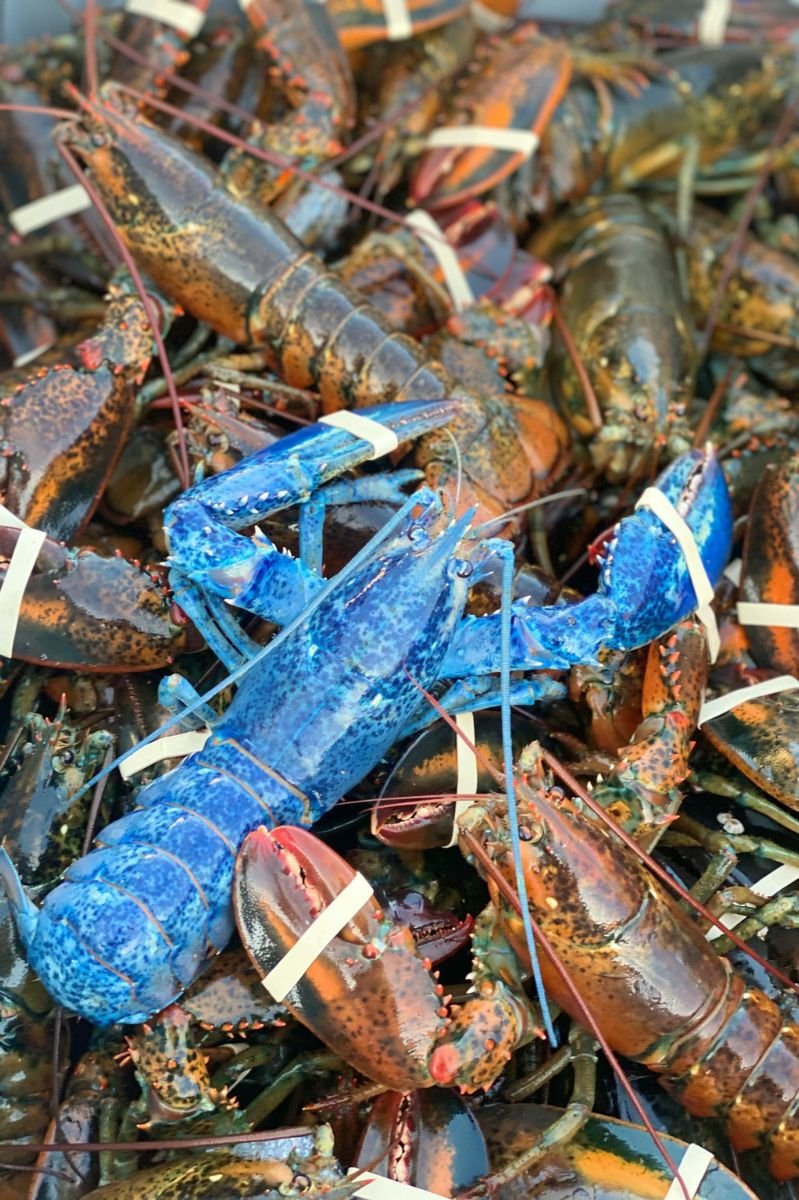
Causes of Lobster Cannibalism in the Wild
Cannibalism isn’t limited to captivity. In a groundbreaking 2012 study, Professor Richard Wahle and his student Noah Oppenheim from the University of Maine captured the first-ever footage of clawed lobsters preying on each other in their natural habitat. Using smaller lobsters as bait, they observed that in eight out of nine cases, the bait was consumed by other lobsters.
This research pointed to food scarcity as a major driver of cannibalism among lobsters. A surge in the lobster population in Maine Bay during the study led to increased competition for resources, pushing lobsters to turn on each other. Local fishermen confirmed this finding, noting an unprecedented rise in lobster catches during the experiment. While this oversupply led to plummeting market prices, it provided lobster lovers with a silver lining: more affordable access to their favourite delicacy.
Boiling Live Lobsters: A Legal and Ethical Dilemma
When we think about lobsters, the image of their bright red shells often comes to mind. Interestingly, live lobsters are rarely red, they can range from brown and blue to greenish hues, depending on the species. However, no matter their initial colour, they all turn a vibrant red once cooked. This universal transformation isn’t just limited to lobsters, it’s also seen in crabs and other shellfish. But why does this striking change happen?
The Science Behind Lobster Colour Change
The secret to a lobster’s post-cooking glow lies in a pigment called astaxanthin, which is naturally red. In live lobsters, astaxanthin is masked by a protein called crustacyanin, giving them their darker blue, green, or brown tones. However, when exposed to heat during cooking, crustacyanin breaks down, uncovering the bright red hue of astaxanthin. This fascinating reaction is the same reason crabs and shrimps turn vivid shades of red when cooked, a transformation that’s as much science as it is nature’s artistry.
Lobster Welfare: Why Some Countries Ban Boiling Live Lobsters
Lobster cooking practices have come under scrutiny in recent years, particularly regarding the ethics of boiling them alive. Some countries, including Switzerland and Norway, have enacted laws making it illegal to place a live lobster directly into boiling water without first stunning it.
These regulations stem from increasing evidence that lobsters are sentient creatures capable of experiencing pain. Boiling them alive is believed to subject them to unnecessary suffering. As a result, these countries mandate humane killing methods, such as stunning or swiftly dispatching the lobster before cooking, to ensure a more ethical approach. But this raises an important question: What is the most ethical way to do this?
Finding the Best Approach
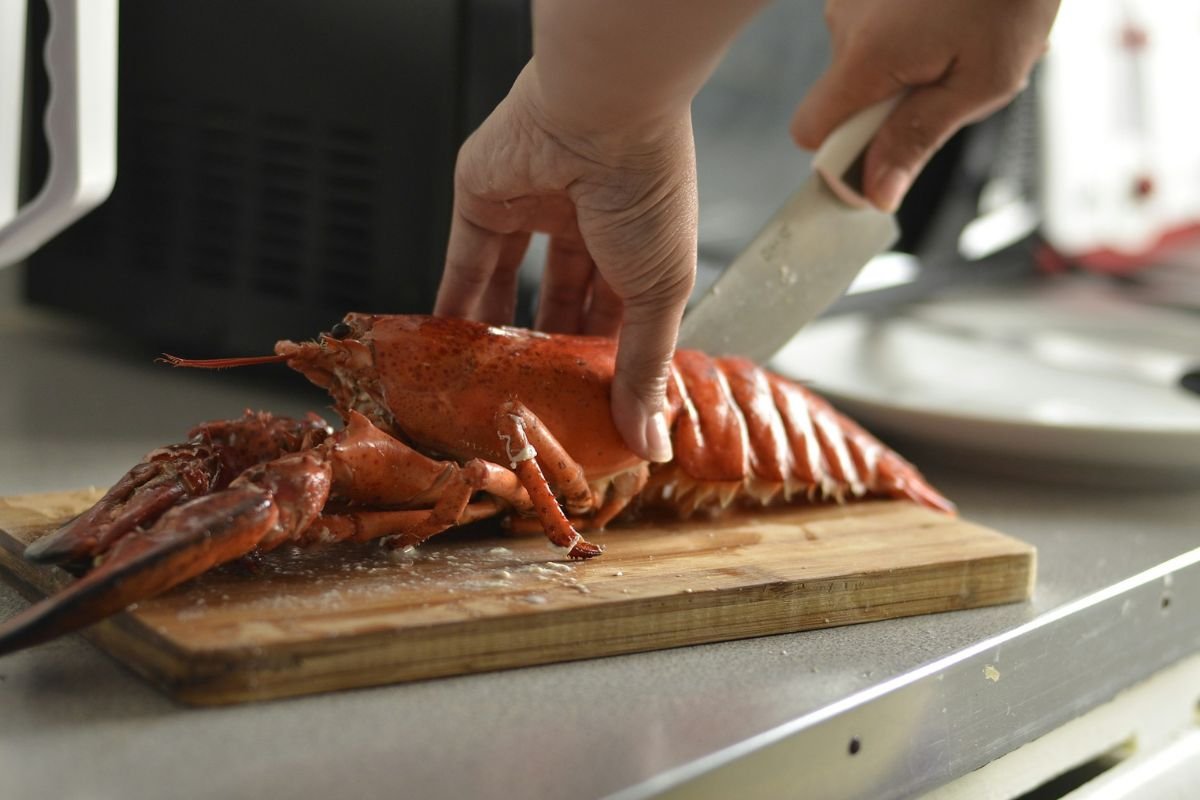
Over the years, chefs and zoologists have debated the most humane way to prepare lobsters for cooking. Several methods have been suggested:
- Piercing the lobster’s head: Using a knife to quickly pierce the head is thought to result in instant death, but due to the lobster’s small and decentralised brain, this may not be as effective as it seems.
- Slicing the lobster in half: Cutting the lobster along its centreline is another popular method, though this too is questioned for its effectiveness in ensuring an immediate, painless death.
- Freezing before cooking: Some chefs recommend briefly freezing the lobster to numb it before cooking, but critics argue that this might actually prolong suffering.
Despite these efforts, there’s no consensus on the most ethical way to kill a lobster. As our understanding of animal sentience grows, so too does the need to refine these practices.
The Most Humane Method: Electric Stunning
If traditional methods like piercing or freezing fall short of being humane, is there a better solution? Enter electric stunning, a method widely regarded as the most ethical way to kill lobsters. Using a specialised device, this method renders lobsters unconscious almost instantly and ensures death within 10 seconds. The process involves placing the lobster in a stainless steel box, pressing a button, and delivering a lethal electric shock, efficient, painless, and far kinder than boiling alive.
However, there’s a catch: these devices are expensive and typically found only in high-end restaurants, making them inaccessible to the average home cook. This raises an important question, what can be done at home to prepare lobsters humanely?
Hypnotising Lobsters: A Controversial Home Method
For those without access to stunning devices, a peculiar method has gained traction: hypnotising lobsters. According to some, holding a lobster upside down and gently stroking its back causes it to relax into a sleep-like state. The idea is that this calming technique reduces suffering when the lobster is cooked.
While this method has gained popularity online, it remains largely anecdotal and unverified by scientific studies. Critics argue that it’s challenging to determine whether the lobster is truly relaxed or simply immobilised. Furthermore, they question whether it makes a meaningful difference once the decision to cook the lobster has been made.
Ethical Responsibility: A Reflection of Human Empathy
When it comes to cooking lobsters, ethical considerations often spark a deeper debate. Some argue that the brutality of nature far outweighs the suffering inflicted by humans. For instance, a lobster being torn apart and eaten by a triggerfish in the wild is likely experiencing greater pain than if it were cooked by humans.
While this may be true, humanity’s capacity for empathy sets us apart. Unlike animals driven by survival instincts, humans have the ability to consider the consequences of our actions and make ethical choices. By minimising the suffering of animals when possible, we demonstrate compassion, a trait that defines our moral responsibilities.
Ultimately, the difference lies in choice. Nature may be cruel, but as conscious beings, we have the opportunity to act with intention and kindness. Isn’t that what separates us from the natural world’s harsher realities?
Final Thoughts: Embracing Ethical Responsibility
In the wild, lobsters face a harsh and often brutal end, whether it’s being dismembered by a predator or succumbing to the exhaustion of molting. Yet, as humans, we possess something nature’s predators lack: empathy. Our understanding of their biology, longevity, and even their survival instincts highlights how extraordinary these creatures truly are. With this knowledge comes an important responsibility.
Just because nature operates with raw brutality doesn’t mean we should follow suit. Our intelligence and capacity for emotion call us to act with consideration. Whether we’re making choices about how to prepare a lobster or advocating for the protection of marine life, reducing suffering isn’t just about ethics, it’s a reflection of our shared humanity. After all, isn’t it our ability to think, care, and empathise that elevates us beyond nature’s relentless cycle?
A New Perspective
Hopefully, this article has offered you a deeper appreciation for lobsters and their fascinating lives. From their remarkable biology to their unique challenges, they remind us of the intricate beauty and complexity of marine life. By understanding these creatures better, perhaps we can approach them, and all animals, with greater respect.
Thank you for diving into the depths of the ocean with me. Let’s continue to learn, reflect, and grow together. Until next time, may we all be guided by compassion in the choices we make.

